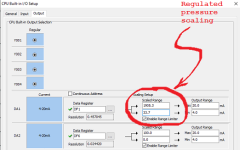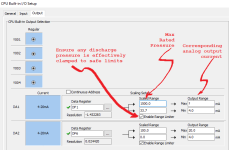Okay, I keep asking this: how long does it take to get up to some pressure? Minutes? Seconds?
Does the operator tweak the knob, then wait (how long?) for it to settle, and repeat?
If it's a pressure regulator, then I don't think it matters how fast it is turned, and the only reason to turn it slowly is to avoid too much overshoot when approaching from below.
If I were the impatient operator, I would have the regulator set to max, and then when it gets close I would turn it to 0 quickly, over time and experience I should be able to gauge the in-flight.
The knob is literally a manual pressure transducer. As you turn the knob it let's more and more pressure in. He tweaks the knob a bit and the air driven pressure increases. It takes less than a second for the pressure to settle, then he turns it again and again untill the pressure gauge on the water side reaches the required amount.
It takes less than a minute to get to pressure manually. You can hear the pulses of the compressed air entering the pump every second or so as the operator turns the knob.





